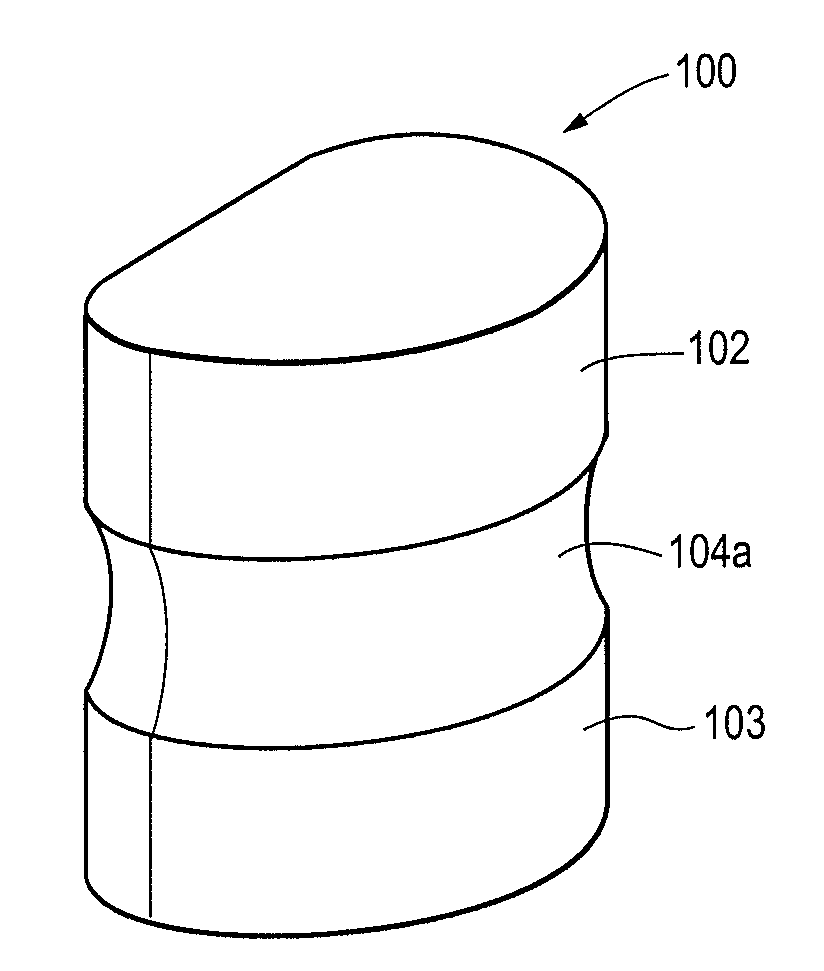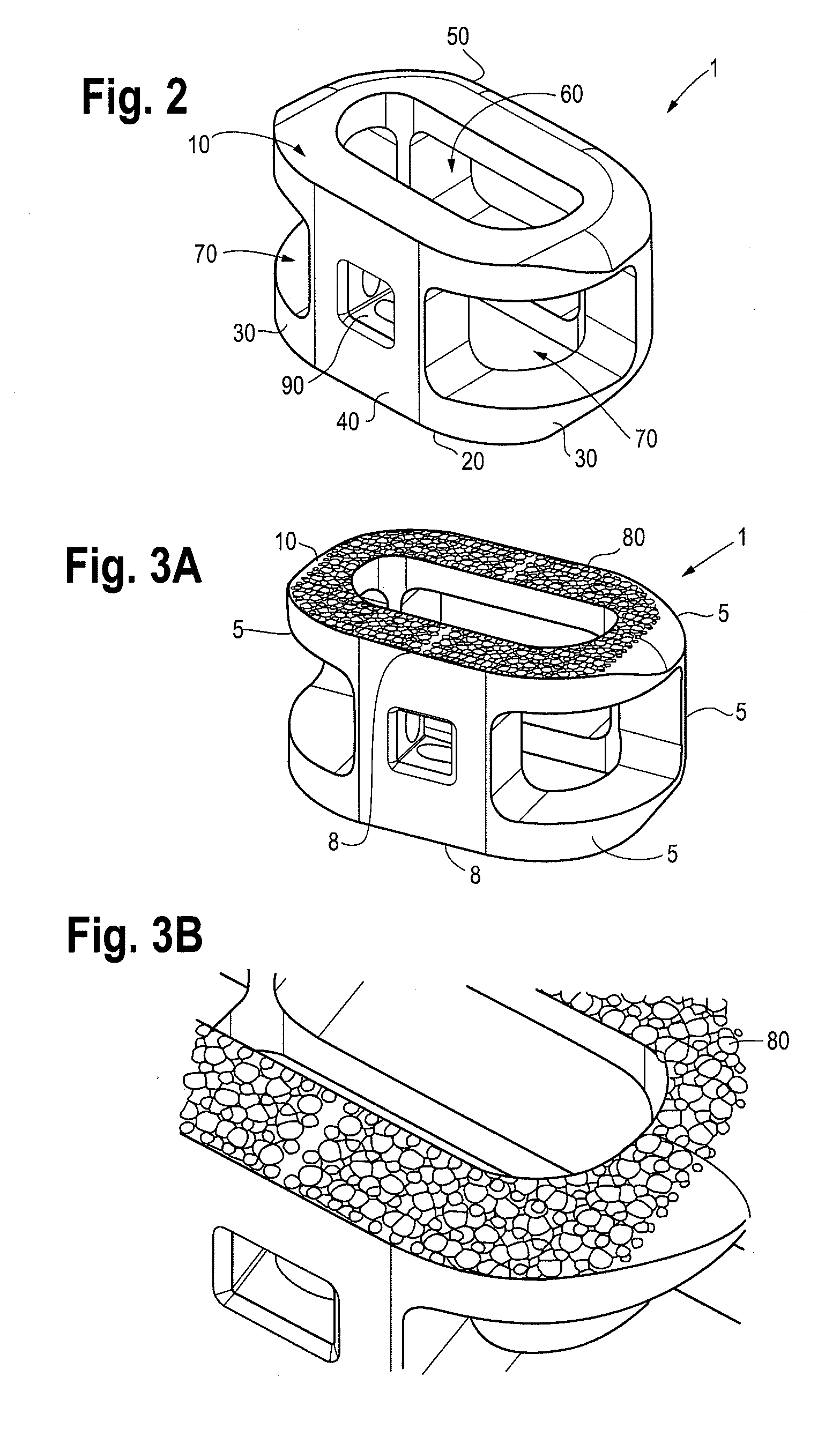Microstructured implant surfaces
a technology of microstructured implants and implant surfaces, applied in the direction of prosthesis, packaging foodstuffs, packaging goods, etc., can solve the problems of discs becoming diseased or infected, affecting the quality of life of patients, so as to achieve significant improvement
- Summary
- Abstract
- Description
- Claims
- Application Information
AI Technical Summary
Benefits of technology
Problems solved by technology
Method used
Image
Examples
examples
Background
[0064]Titanium implants with physical-chemical modifications such as micron or submicron scale topographic features have been shown to increase osteoblast differentiation and local factor production in vivo and to increase pen-implant bone formation and decrease healing time in vivo. Polyetheretherketone (PEEK) is used as a cage or spacer in vertebral interbody fusion to maintain spinal alignment and segmental stability while facilitating bony fusion. The aim of this analysis was to elucidate whether common intervertebral materials such as PEEK and titanium alloy (Ti6AI4V) induce osteoblast maturation and generate an osteogenic environment.
Methods
[0065]The methods employed herein are shown below.
[0066]Human osteoblast-like MG63 cells were cultured on tissue culture polystyrene (TCPS), PEEK, or smooth [sTi6AI4V, Sa>90 nm] and rough [rTi6AI4V, Sa=1.81 μm] Ti6AI4V surfaces as shown in FIG. 9. Gene expression was measured by qPCR. Osteoblast maturation was assessed by analysis...
PUM
| Property | Measurement | Unit |
|---|---|---|
| depth | aaaaa | aaaaa |
| etch depth | aaaaa | aaaaa |
| surface roughness | aaaaa | aaaaa |
Abstract
Description
Claims
Application Information
 Login to View More
Login to View More - R&D
- Intellectual Property
- Life Sciences
- Materials
- Tech Scout
- Unparalleled Data Quality
- Higher Quality Content
- 60% Fewer Hallucinations
Browse by: Latest US Patents, China's latest patents, Technical Efficacy Thesaurus, Application Domain, Technology Topic, Popular Technical Reports.
© 2025 PatSnap. All rights reserved.Legal|Privacy policy|Modern Slavery Act Transparency Statement|Sitemap|About US| Contact US: help@patsnap.com



